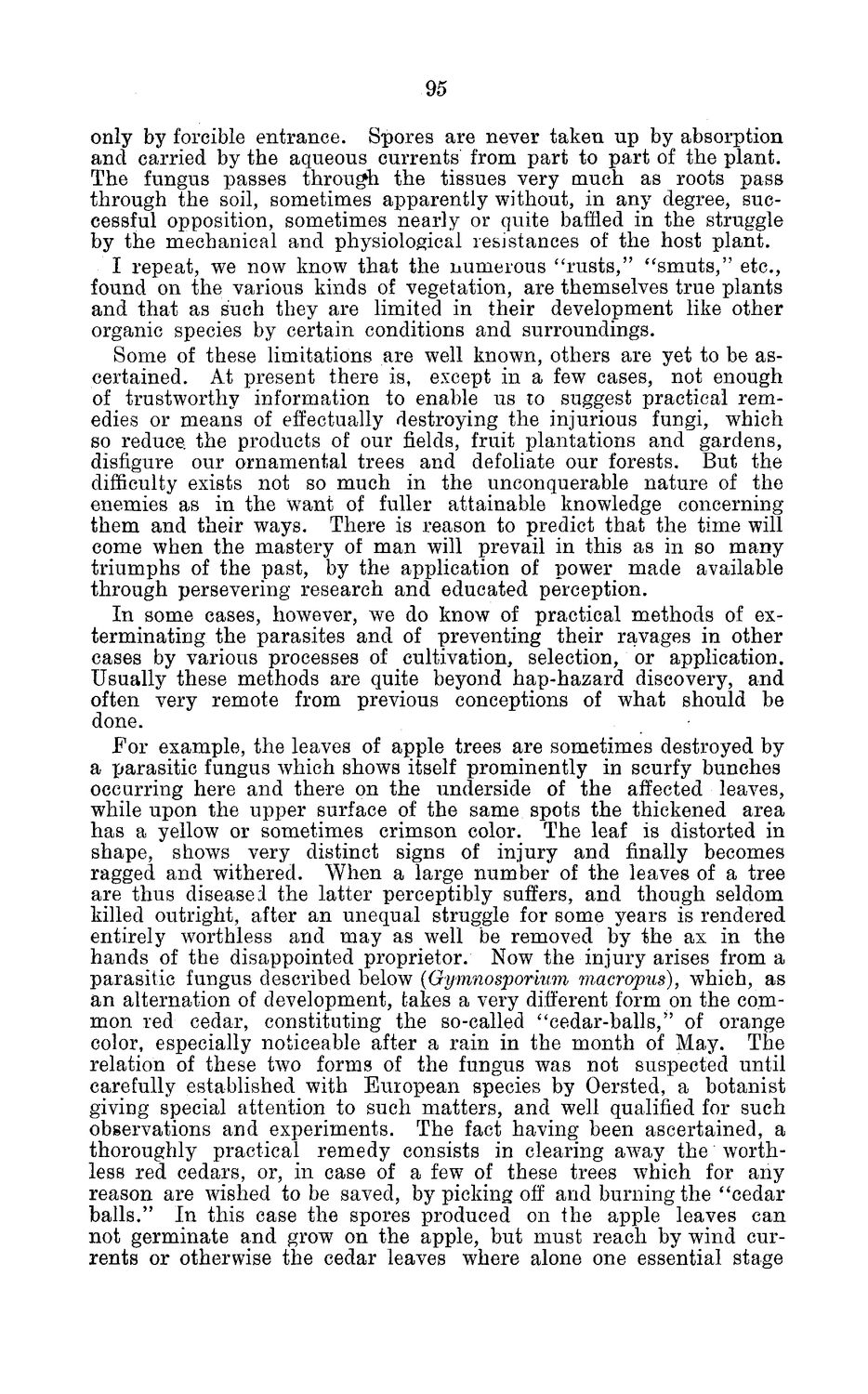| |
| |
Caption: Board of Trustees Minutes - 1884
This is a reduced-resolution page image for fast online browsing.

EXTRACTED TEXT FROM PAGE:
95 only by forcible entrance. Spores are never taken up by absorption and carried by the aqueous currents from part to part of the plant. The fungus passes through the tissues very much as roots pass through the soil, sometimes apparently without, in any degree, successful opposition, sometimes nearly or quite baffled in the struggle by the mechanical and physiological resistances of the host plant. I repeat, we now know that the numerous "rusts," "smuts," etc., found on the various kinds of vegetation, are themselves true plants and that as such they are limited in their development like other organic species by certain conditions and surroundings. Some of these limitations are well known, others are yet to be ascertained. At present there is, except in a few cases, not enough of trustworthy information to enable us to suggest practical remedies or means of effectually destroying the injurious fungi, which so reduca the products of our fields, fruit plantations and gardens, disfigure our ornamental trees and defoliate our forests. But the difficulty exists not so much in the unconquerable nature of the enemies as in the want of fuller attainable knowledge concerning them and their ways. There is reason to predict that the time will come when the mastery of man will prevail in this as in so many triumphs of the past, by the application of power made available through persevering research and educated perception. In some cases, however, we do know of practical methods of exterminating the parasites and of preventing their ravages in other cases by various processes of cultivation, selection, or application. Usually these methods are quite beyond hap-hazard discovery, and often very remote from previous conceptions of what should be done. For example, the leaves of apple trees are sometimes destroyed by a rjarasitic fungus which shows itself prominently in scurfy bunches occurring here and there on the underside of the affected leaves, while upon the upper surface of the same spots the thickened area has a yellow or sometimes crimson color. The leaf is distorted in shape, shows very distinct signs of injury and finally becomes ragged and withered. When a large number of the leaves of a tree are thus diseased the latter perceptibly suffers, and though seldom killed outright, after an unequal struggle for some years is rendered entirely worthless and may as well be removed by the ax in the hands of the disappointed proprietor. Now the injury arises from a parasitic fungus described below (Gymnosporium macropus), which, as an alternation of development, takes a very different form on the common red cedar, constituting the so-called "cedar-balls," of orange color, especially noticeable after a rain in the month of May. The relation of these two forms of the fungus was not suspected until carefully established with European species by Oersted, a botanist giving special attention to such matters, and well qualified for such observations and experiments. The fact having been ascertained, a thoroughly practical remedy consists in clearing away the worthless red cedars, or, in case of a few of these trees w7hich for any reason are wished to be saved, by picking off and burning the "cedar balls." In this case the spores produced on the apple leaves can not germinate and grow on the apple, but must reach by wind currents or otherwise the cedar leaves where alone one essential stage
| |